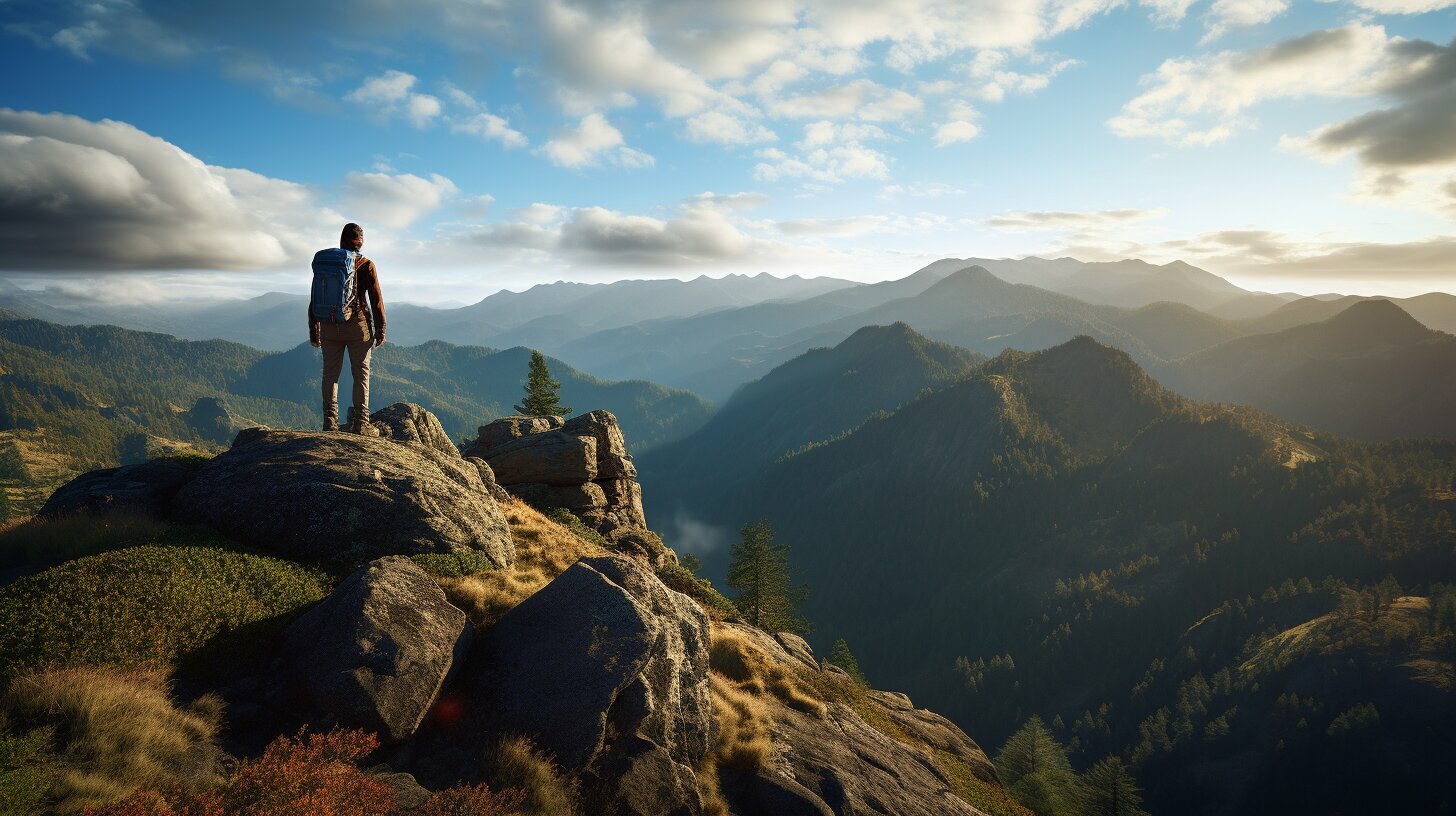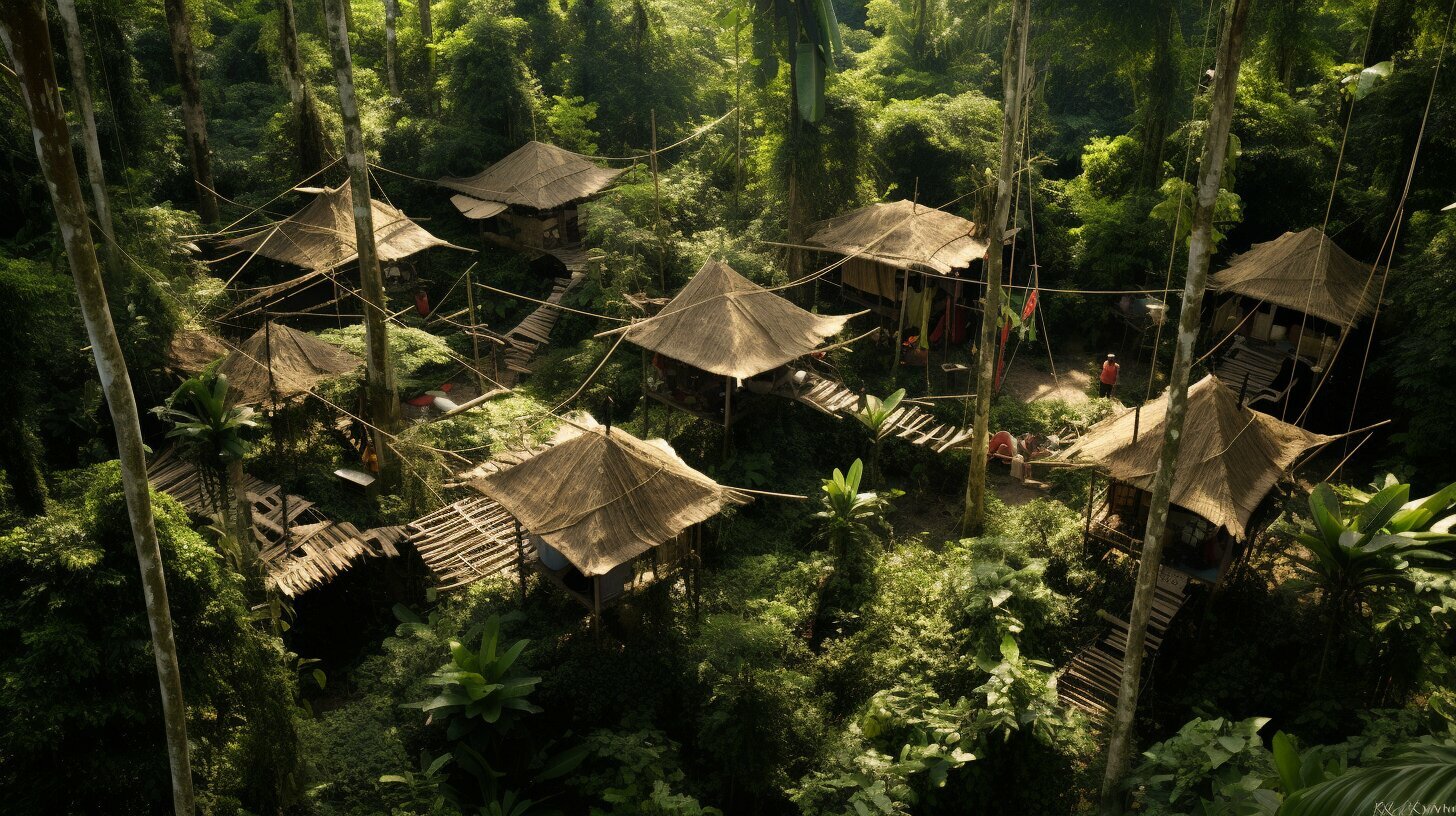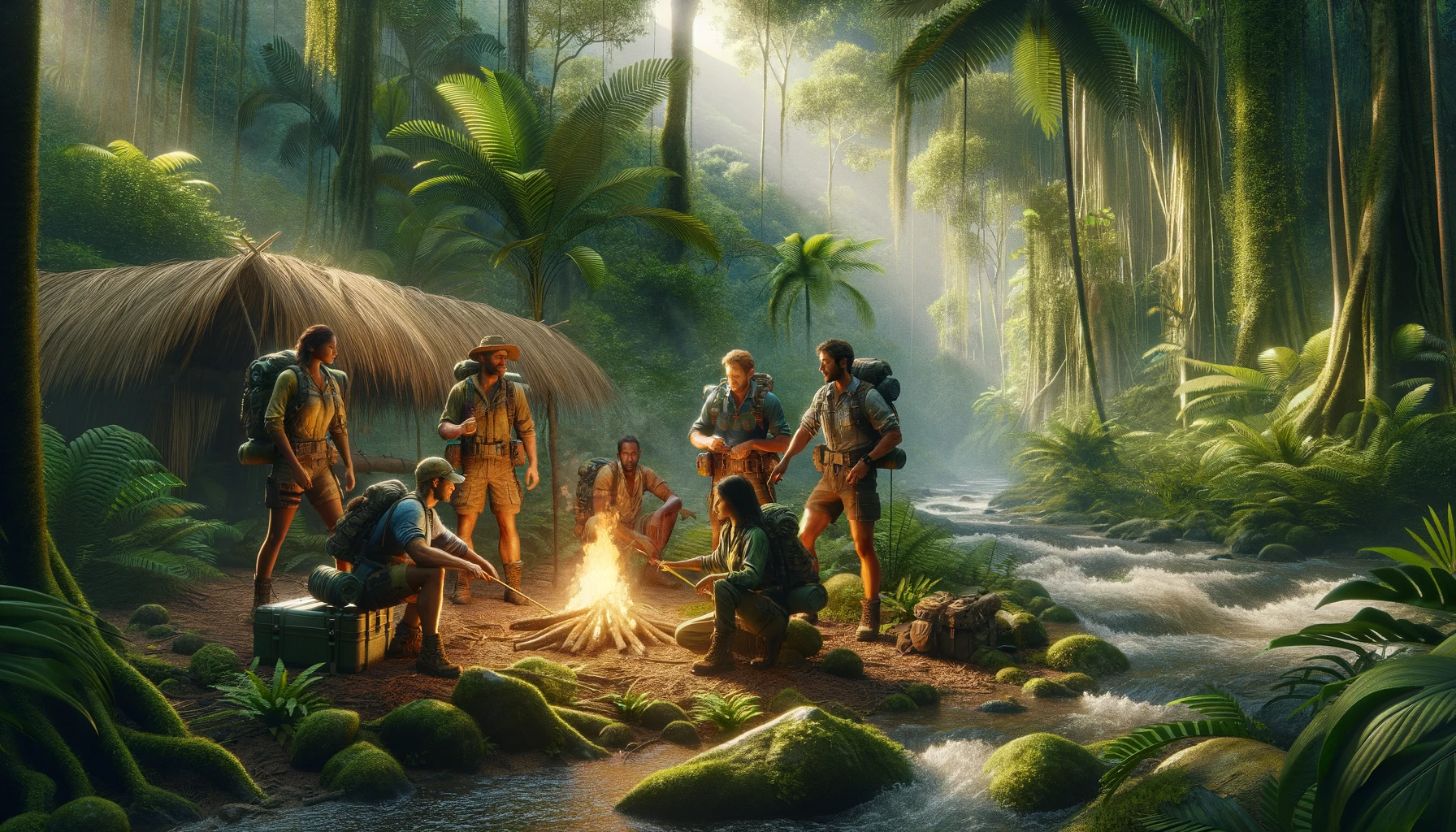When exploring the wilderness, it’s essential to be prepared for unexpected situations, and getting lost without a compass is one of them. Navigating without a compass can be challenging, but with the right techniques, it’s possible to find your way back to safety. In this article, we’ll explore different compass navigation techniques and share tips for surviving without a compass in the wilderness.
Key Takeaways
- Navigating without a compass requires knowledge of natural navigation techniques and landmarks.
- Understanding the relationship between time and direction is crucial for orienteering without a compass.
- Observing and utilizing natural navigation aids can help you find your way without a compass.
- Developing mental maps and navigation skills is necessary for navigating without a compass.
- Improvising tools for direction finding and practicing preparedness can increase your chances of survival without a compass.
Understanding Natural Navigation Techniques
When you find yourself without a compass, it’s important to understand and utilize natural navigation techniques to find your way. These techniques involve observing and interpreting elements of nature to determine direction and stay on course.
Natural Navigation Techniques:
Disclosure: When you buy through links on our site, we may earn an affiliate commission.
| Technique | Description |
|---|---|
| Using the Sun | One of the most reliable natural navigation techniques is using the sun. The sun rises in the east and sets in the west, so by observing its position in the sky, you can determine direction. In the Northern Hemisphere, the sun is always to the south at noon, while in the Southern Hemisphere, it is always to the north. |
| Following the Stars | The stars can also be used for navigation, especially at night. The North Star, also known as Polaris, is always located in the north. By locating Polaris, you can determine north and navigate from there. |
| Using the Moon | The moon can also be used for navigation, particularly during a full moon. The side of the moon facing the sun is always illuminated, and by knowing the moon’s phases, you can determine direction. |
| Observing Shadows | Observing shadows can also be a helpful technique. When the sun is low on the horizon, objects cast long shadows that can be used to determine direction. |
If you’re unfamiliar with these techniques, it’s important to practice them before relying on them in a survival situation. Take the time to familiarize yourself with the patterns of the sun, stars, and moon so that you can accurately determine direction when needed.
Another important aspect of using natural navigation techniques is to stay aware of environmental factors that can affect them. Weather conditions, such as cloud cover, can make it difficult to observe the sun and stars. It’s also important to note that some of these techniques are region-specific, so it’s important to know the region you’re navigating in.

Utilizing Landmarks and Terrain Features
When navigating without a compass, landmarks and terrain features can serve as reliable guides to keep you on track and help you find your way. In the wilderness, identifying and understanding these visual cues is crucial.
First and foremost, take the time to study your surroundings. Familiarize yourself with the landscape, noting any significant features such as mountains, rivers, or valleys. Pay attention to any unique elements that can help you differentiate one area from another.
Next, learn to recognize and interpret landmarks such as rock formations, trees, and distinctive patterns in the surrounding vegetation. Use these markers to maintain your course and prevent getting lost. For example, if you come across a particularly large rock formation, use it as a reference point and make note of the direction you need to go to reach your destination.
Similarly, terrain features such as ridgelines, creek beds, and even animal trails can provide crucial clues about your location. Study the terrain as you move and take note of any changes in elevation or vegetation as this can help you pinpoint your position on a map or mental image of the area.

Remember, the key to using landmarks and terrain features effectively is to pay close attention to your surroundings and to think critically about the information you are receiving. By doing so, you can master the art of navigating without a compass and confidently find your way in the wilderness.
Understanding the Importance of Time and Direction
When navigating without a compass, understanding the relationship between time and direction is crucial to staying on course. Orienteering without a compass requires you to be able to determine direction based on the position of the sun or the time of day.
One common method for finding direction is to use a watch. Hold the watch flat and point the hour hand towards the sun. The angle between the hour hand and the 12 o’clock mark indicates the south in the Northern Hemisphere and north in the Southern Hemisphere.
Another technique is known as the “shadow stick” method. This involves placing a stick upright in the ground and marking the tip of its shadow. Wait for 10-15 minutes, and mark the tip of the shadow again. Draw a line between the two marks to determine an east-west line. Then, stand with the first mark on your left and the second mark on your right. You will now be facing north.

It’s important to keep in mind that these methods may not be exact, but they can provide a rough sense of direction. If you’re in a rush or in an emergency situation, these tips can help you get back on track.
Recognizing and Utilizing Natural Navigation Aids
When navigating without a compass, it’s crucial to be aware of natural navigation aids in your surroundings. These alternative navigation methods can include observing the growth patterns of trees, paying attention to the behavior of animals, and considering the flow of water. By recognizing and utilizing these clues, you can determine directions and orient yourself in the wilderness.
One natural navigation aid is the growth patterns of trees. Trees tend to grow towards the sun, with fuller branches on the south side and more shade on the north. By observing the growth patterns of trees, you can determine your approximate direction and adjust your route accordingly.

Another natural navigation aid is the behavior of animals. Certain animals, like ants, tend to move in straight lines. By following the path of these animals, you can often find a direct route to a water source or shelter. Additionally, the flight patterns of birds can indicate the direction of nearby land.
The flow of water can also be a valuable natural navigation aid. Rivers and streams generally flow in a consistent direction, which can help orient yourself in the wilderness. Additionally, certain plants and animals are often found near bodies of water, providing further clues for direction finding.
By recognizing and utilizing natural navigation aids, you can enhance your ability to navigate without a compass. These alternative navigation methods can be especially useful in situations where other tools or resources are unavailable.
Developing Mental Maps and Navigation Skills
Being lost without a compass can be a stressful and dangerous situation. However, with the right skills and techniques, you can confidently navigate through the wilderness using alternative navigation methods.
One of the most essential skills for compassless navigation is developing mental maps. This involves creating an internal sense of direction and understanding of your surroundings. To do this, pay close attention to landmarks and terrain features. Take note of unique trees, rock formations, and bodies of water. Use them to create mental landmarks along your route. This will help you track your progress and easily retrace your steps if needed.
Another important aspect of navigation is situational awareness. Keep track of the direction you are facing and pay attention to the terrain around you. Look out for changes in elevation, such as hills or valleys, that may indicate your location on a map. Observe the behavior of animals, as they are often good indicators of water sources and other important landmarks.
Using natural navigation cues is also crucial for compassless navigation. Look for signs of the sun, moon, and stars to determine direction. The sun rises in the east and sets in the west, so use its position throughout the day to get a sense of direction. At night, the North Star can be a reliable guide for finding true north.
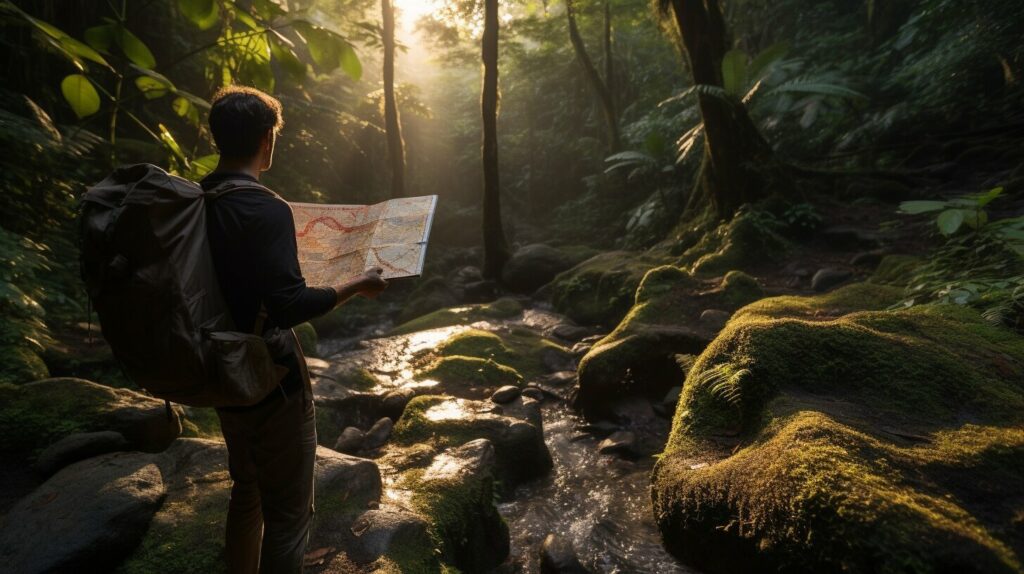
When navigating without a compass, it’s important to remain calm and think logically. If you become disoriented, stop and take a moment to assess your surroundings. Look for familiar landmarks or terrain features that you may have seen before. Use your mental map and situational awareness to get back on track.
By practicing and honing your navigation skills, you can become proficient at compassless navigation and confidently explore the wilderness. Remember to always carry essential tools and resources, such as maps, a watch, and a compass as a backup. With these skills and tools at your disposal, you can stay safe and enjoy the beauty of nature without the fear of getting lost without a compass.
Improvising Tools for Direction Finding
In a survival situation, it is crucial to be able to navigate without a compass. However, if you find yourself lost without a compass, don’t panic. You can still improvise tools for direction finding utilizing natural elements around you.
The sun is one of nature’s most reliable navigation aids. You can use it to determine direction by observing its position in the sky.
Tip: Hold up a stick vertically and mark the tip of the shadow with a rock. Wait for 10-15 minutes, then mark the shadow’s tip again. The line between the two marks will run approximately east to west, with the first mark being west.
You can also use natural materials to create a makeshift compass. One method is to place a small magnetized metal needle on a leaf and float it in a puddle of water. The needle will align itself with the Earth’s magnetic field, pointing north-south.
In a pinch, you can also create a sundial. All you need is a stick and a flat surface. Stick the stick upright into the ground and mark the position of the shadow every 30 minutes. Connect the marks with a straight line to create an east-west line. The location of your shadow will also tell you the time of day.
Keep in mind that improvising tools for direction finding requires skill and practice before placing it in a survival situation. Always have a backup plan and be prepared to navigate without any tools.

Practicing Navigation Skills and Preparedness
Once you’ve familiarized yourself with different compass navigation techniques, it’s essential to practice these skills in non-emergency situations. This will help build your confidence in navigating without a compass and ensure that you’re well-prepared in case of an emergency.
It’s also important to be prepared before heading out into the wilderness. Always pack essential tools such as maps, a watch, and a whistle in case of an emergency. Make sure to choose a reliable watch that can accurately track time and make use of the sun to determine direction.
Carry enough water and food to sustain yourself for the duration of your trip, and be sure to dress appropriately for the weather and terrain. It’s also a good idea to inform someone of your plans before heading out into the wilderness.
By practicing your navigation skills and being prepared with the right tools and resources, you can confidently navigate without a compass and increase your chances of survival in the wilderness.
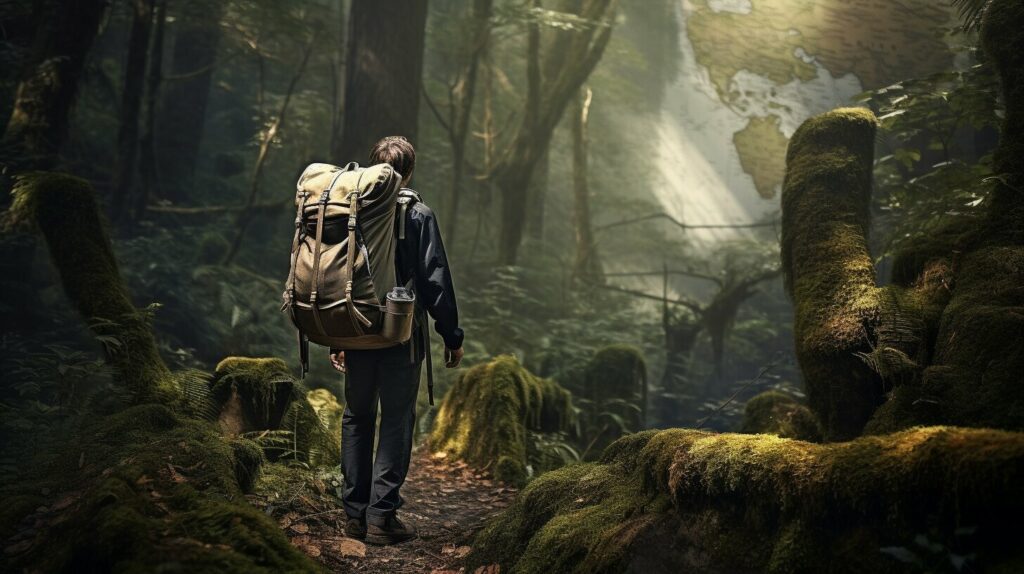
Conclusion
Mastering wilderness navigation without a compass is crucial to your survival and enjoyment of the great outdoors. By understanding natural navigation techniques, terrain features, landmarks, time and direction, natural navigation aids, developing mental maps, and improvising tools for direction finding, you can confidently explore and navigate through the wilderness.
It is important to practice your navigation skills in various terrains and environments, and to always be prepared with essential tools and resources. You never know when you might find yourself lost without a compass, but with the knowledge and skills outlined in this article, you can confidently navigate your way back to safety.
Keep Navigating with Confidence
Don’t let the fear of getting lost without a compass hold you back from experiencing the adventure and beauty of the wilderness. Keep practicing your navigation skills and stay prepared, and you’ll be able to navigate with confidence and ease. Happy exploring!
FAQ
Q: Why is it important to be able to navigate without a compass in the wilderness?
A: Navigating without a compass can be crucial in survival situations where a compass is lost or unavailable. Being able to rely on natural navigation techniques can help you find your way and avoid potential dangers.
Q: What are some natural navigation techniques?
A: Natural navigation techniques include using the sun, stars, moon, and shadows to determine direction. These methods can be learned and practiced to confidently navigate without a compass.
Q: How can I utilize landmarks and terrain features for navigation?
A: Studying and recognizing landmarks and terrain features in the wilderness is essential for compassless navigation. By understanding your surroundings and using visual cues, you can successfully navigate without a compass.
Q: How does time and direction relate to navigation without a compass?
A: Time and direction are closely linked in navigation. Techniques such as using a watch or the position of the sun can help you determine your direction without relying on a compass.
Q: What are some natural navigation aids I can utilize?
A: Observing and understanding natural navigation aids such as tree growth patterns, animal behavior, and water flow can provide valuable clues for finding your way without a compass.
Q: How can I develop mental maps and navigation skills?
A: Developing mental maps and honing navigation skills is essential for compassless navigation. Techniques such as enhancing situational awareness and creating mental landmarks can help you navigate effectively.
Q: How can I improvise tools for direction finding?
A: In the absence of a compass, you can improvise tools for direction finding. Methods like creating a makeshift sundial or constructing a simple compass using natural materials can be useful in compassless navigation.
Q: How should I practice navigation skills and preparedness?
A: It’s important to practice navigation skills in non-emergency situations to build confidence. Familiarize yourself with different terrains and environments, and ensure you carry essential tools and resources for navigating without a compass.

